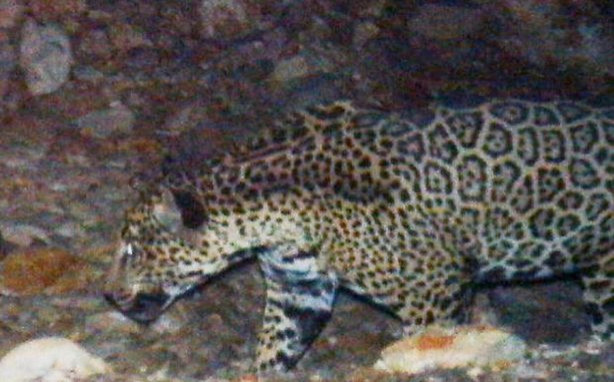The Week In Science: X-Ray Vision, American Jaguar And The Coming Arctic Oil Boom

Between parrot dinosaurs, spinning statues and evidence for soda overdoses, it’s been an action-packed week in science. But there’s still a lot of research and discoveries we couldn’t get to this week. Here’s a roundup of what we missed:
Star Trek fans, rejoice! British scientists are working on a prototype for astronaut radiation protection along the lines of the USS Enterprise’s deflector shield. The researchers are exploring the possibility of creating a magnetic field around a spaceship that would cause radiation to bounce off relatively harmlessly. How the prototype might fare against proton torpedoes is still an unanswered question. [UPI]
If you’re looking to beat the heat by heading to the beach, a sunburn might not be the only thing to worry about. The Natural Resources Defense Council released its annual beach quality report that ranks U.S. beaches by bacterial levels (mostly due to stormwater runoff and sewage). Some of the best beaches, according to the NRDC, include California’s Newport and San Clemente State Beaches, as well as Rehoboth Beach in Delaware. But if you’re heading to lower-ranked spots like New Jersey’s Beachwood Beach or California’s Doheny State Beach, be sure to check for water quality advisories before you go. [NRDC press release]
Lemurs raised in large groups have a better sense of social cues than those that live in smaller communities, a new study shows. [LiveScience]
Superman fans, rejoice along with the Star Trek fans: X-ray vision might soon be possible, thanks to wireless Internet. MIT researchers are developing a device called a “Wi-Vi that uses low power Wi-Fi signals to track moving people, and can even detect people behind walls. [MIT press release]
Unless carbon dioxide emission levels are severely reduced, much of the existing coral reefs across the globe will die, a group of researchers says. Coral survival is threatened by ocean acidification, a side effect of climate change – as the oceans absorb more carbon dioxide, the waters get more acidic, which makes it harder for marine animals like corals (and oysters) to build their shells. [RedOrbit]
Illegal marijuana farms in the Sierra Nevada mountain range are causing an unexpected consequence: a rise in deaths of a rare forest mammal called the fisher. The cat-sized creature, a member of the weasel family, preys on small mammals that could be contaminated with rodent poison used on the farms. While the poison probably doesn’t kill the fishers outright, scientists say it weakens them and makes them more likely to catch diseases and parasites. [LA Times]
The U.S. Fish and Wildlife Service snapped a photo of the only known wild jaguar in the U.S. [Atlantic Wire]
For your long read this weekend, you will probably want to check out this report on the intersection of politics, economics and science that underlies the future of the Arctic. As the ice melts, many players are looking to pounce on the massive oil and gas deposits that will be unlocked by the newly uncovered waters. [Foreign Affairs]
© Copyright IBTimes 2024. All rights reserved.





















